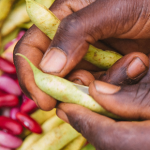By Timothy Thomas The most recent National Climate Assessment found that temperatures across the United States have already risen by more than 1 degree on average due to climate change. So, if we’re already feeling the effects of climate change, why do so many Americans remain skeptical of it? Part of the reason may be that while […]
Policy Note on Climate Change, Gender and Nutrition Linkages – Research Priorities for Bangladesh
Climate change, coupled with high levels of poverty and population density, is a substantial threat to sustainable development in Bangladesh. Climate-related threats, such as flooding, inundation, salt-water intrusion, and changes in temperatures are increasing with climate change. Achieving the goals of Feed the Future and the Global Food Security Strategy requires careful consideration of the impact of relevant climate science on agricultural production, while at the same time considering other cross-cutting issues that influence agricultural growth, poverty alleviation, and resilience—especially gender and nutrition. This policy note summarizes assessments of these linkages in Bangladesh under GCAN.
Policy note on the interlinkages of Climate Change, Gender and Nutrition in Nigeria
Increasing temperature, erratic rainfall, and other extreme events, such as floods and droughts, pose severe threats to development in Nigeria. Climate change will have significant adverse impacts on crop production and livelihoods, making the country’s poor and disadvantaged people even more vulnerable. It is imperative that the impact of relevant climate science on agricultural production be considered, together with important cross-cutting issues that influence agricultural growth, poverty alleviation, and climate resilience—especially gender and nutrition—if the goals of Feed the Future and the Global Food Security Strategy are to be achieved. This policy note summarizes assessments of these interlinkages in the Nigerian context under GCAN.
Climate change and variability: What are the risks for nutrition, diets, and food systems?
By Jessica Fanzo, Rebecca McLaren, Claire Davis, and Jowel Choufani
The paper uses a food systems approach to analyze the bidirectional relationships between climate change and food and nutrition along the entire food value chain. It then identifies adaptation and mitigation interventions for each step of the food value chain to move toward a more climate-smart, nutrition-sensitive food system. The study focuses on poor rural farmers, a population especially vulnerable to the adverse effects of climate change on nutrition, although we recognize that there are other vulnerable populations, including urban poor and rural populations working outside of agriculture. Although this report does not explicitly exclude overweight and obesity, it focuses primarily on undernutrition because this nutritional status is currently more prevalent than overnutrition among our target population.
Gender, climate change, and resilient food systems: Lessons from strategic adaptation by smallholder farmers in Cameroon
By Lilian Nkengla-Asi, Suresh Chandra Babu, Holger Kirscht, Scarlett Apfelbacher, Rachid Hanna, Amare Tegbaru
Climate change has major impacts on the food security and livelihoods of smallholder farmers in Africa south of the Sahara. Vulnerable to the vagaries of weather and to being chronically poor, women farmers are unequally and more negatively affected by climate change and seasonal changes than male farmers. This study aims to understand how men and women in Cameroon’s Southwest region differ in their vulnerability to and their coping strategies for climate change impacts. Data collected through focus group discussions and in-depth interviews from four rural communities in the Southwest region showed that most respondents (both male and female) had observed a change in the climate in the previous 10 years. According to respondents, climate variables such as the timing and length of the rainy season had changed, affecting crop production of both men and women. Women were shown to be more vulnerable than men, as the changes led to a reduction in yields, which affected family well-being. Men and women in the researched communities strive to cope with climate change and related seasonal variations in different ways. Whereas most men tend to move away from the area in a search for paid jobs in the cities, women remain in their own communities and work to diversify their livelihood activities. Other coping strategies for men and women in the research communities include income diversification, planting of early-maturing crops, and use of pest-resistant seeds. Men and women have different experiences and different adaptation strategies to climate change and seasonal variations in weather patterns. Understanding such gender differences could facilitate the development of gender-sensitive policies and programs and could help improve sustainable and more inclusive adaptation strategies.
- « Previous Page
- 1
- …
- 3
- 4
- 5
- 6
- 7
- 8
- Next Page »



